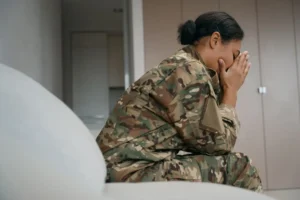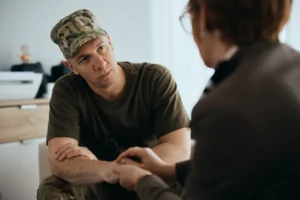You are not weak if you want help. In a 2019 survey, nearly 20 percent of Americans disclosed that they received mental health treatment in the last year. They took prescriptions, spoke to a counselor, and pursued strategies to combat substance abuse.
If you have a dependency on substances, you should go to someone for support. But be mindful of the support you can receive. Each therapist offers their own treatments, including cognitive behavioral therapy.
What is that kind of therapy? What exactly is a treatment plan? What strategies can a person pursue to eliminate their dependency on drugs?
Answer these questions and you can get effective and enduring treatment for addiction. Here is your quick guide.
The Essentials of Cognitive Behavioral Therapy
As the name suggests, cognitive behavioral therapy (CBT) combines two different theories in psychotherapy. Cognitive theory explains a person’s behavior by delving into their thought processes. Behavioral theory examines a person’s behavior in relationship to their environment.
CBT combines these two theories. It regards a person’s thoughts as responses to their environment. A person is tempted to use drugs in order to deal with stress, anxiety, or trauma.
Once a therapist looks at an individual’s personal history, they can trace their thoughts. They can help a client come to understand how they think and respond to stress. They can then replace their negative behaviors with positive ones.
This process is especially helpful for people concerned about relapsing. By replacing the thoughts that encourage relapsing, a person is at less risk.
Therapists have used CBT in clinical settings since the 1970s. In addition to addiction treatment, it has been used for anxiety and depression. This makes it good for people who have a dual diagnosis.
The Terms of a Treatment Plan
Therapists begin devising a treatment plan by defining the problem at hand. They look at a person’s health history and talk to them personally. If they find two mental health conditions at once, they diagnose both and propose treatments for each.
The person who is seeking help is involved in their treatment plan. The therapist delegates some responsibility to them. They may need to take medication, or they may need to practice some skills at home.
The plan is geared toward a certain goal, like eliminating drug dependency. A treatment plan is never set in stone. As the therapist and their client meet with each other, the therapies and goals change.
The plan can last any amount of time until the client reaches their goal. The intention is that the client will then practice the therapies they learned on their own. But if they want to return to their therapist, they can.
CBT for Substance Abuse
Once a therapist decides that CBT is good for their client, they set a plan in motion. The first step is educating the client on the therapy. They understand its core concepts and what it will entail.
The therapist and client then devise some behaviors they would like to target. These behaviors can be the use of the substance itself. It can also be thinking about using the substance or acquiring money to buy it.
The therapist asks their client to consider the emotions and thoughts that lead them to their behaviors. It can be uncomfortable talking about thoughts that lead a person to abuse drugs. Therapists give their clients breaks and go slowly.
Once the thoughts are confronted, the therapist works with the client on devising strategies to overcome them. They practice the strategies in the office, then the client goes home and performs them.
They return to the office and advise their therapist on what happened. If the strategy did not work, the two will work together on coming up with a new one.
Many therapists combine CBT with other forms of therapy. Medically-assisted treatment helps people detoxify themselves. Group therapy helps individuals feel less lonely and assist others with their treatments.
Individual Techniques
There are several exercises that a person can use during their therapy. A simple one is to record their thoughts. They keep a journal and write down their negative impulses.
They find evidence that corroborates and refutes their thoughts. If they believe they are useless, they find proof that shows they have value. This helps them dismantle their negative impulses.
Behavioral experiments contrast negative and positive thoughts together. The client is asked to think of both and decide which one helps them change their behavior better. Some people respond to self-criticism, while others enjoy self-kindness.
Imagery-based exposure involves visualizing negative memories. This is a difficult exercise, but one that can produce significant change.
A person recalls the memory, and their therapist asks them to use all of their senses. They take note of sights, sounds, and emotions. The two revisit this memory several times, which can help reduce the anxiety that it causes.
Scheduling pleasant activities is a good counter to imagery-based exposure. The therapist helps their client come up with fun things they can do instead of using drugs. This distracts them from drug use and gives them goals to hit during the week.
Get the Help You Deserve
Cognitive behavioral therapy is a powerful treatment for addiction. It targets and changes the harmful thoughts and memories that result in dependency.
The therapy begins with a therapist devising a treatment plan. They diagnose their client, then devise goals for them. The client exercises some responsibility, practicing some strategies on their own time.
A CBT treatment plan takes some time. It incorporates several techniques, including thought records and behavioral experiments. Someone can combine these techniques with other therapies, creating a resolute support system. Turn to experienced professionals for support. Safe & Sound Treatment serves Costa Mesa. Contact us today.













